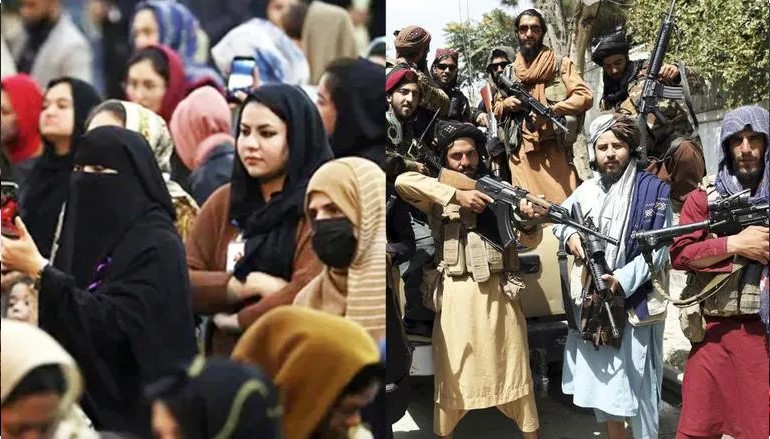Universities in Kabul were almost empty on the first day of the Afghan school year yesterday, as professors and students wrestled with the Taliban’s restrictive new rules for the classroom.
It can be recalled that the Taliban have promised a softer reign than during their first stint in power from 1996-2001 when women’s freedoms in Afghanistan were sharply curtailed and they were banned from higher education.
This time the hardline Islamist group has said women will be allowed to go to private universities under the new regime, but they face tough restrictions on their clothing and movement.
Women can only attend class if they wear an abaya — a flowing robe — and a niqab — a face veil with a small window to see through — and are separated from men, the Taliban said.
‘Our students don’t accept this and we will have to close the university,’ said Noor Ali Rahmani, the director of Gharjistan University in Kabul, on an almost empty campus.
Read Also: Rockets Fired At Kabul Airport As US Troops Pull Out
‘Our students wear the hijab, not the niqab,’ he added, referring to a headscarf.
The hardline group’s education authority issued a lengthy document on Sunday outlining their measures for the classroom, which also ruled that men and women should be segregated — or at least divided by a curtain if there are 15 students or less.
‘We said we didn’t accept it because it will be difficult to do,’ Rahmani told reporters.
‘We also said that it is not real Islam, it is not what the Quran says.’
From now on at private colleges and universities, which have mushroomed since the Taliban’s first rule ended, women must only be taught by other women, or ‘old men’, and use a women-only entrance.
They must also end their lessons five minutes earlier than men to stop them from mingling outside.
So far, the Taliban has said nothing about public universities.
Jalil Tadjlil, a spokesman for Ibn-e Sina University in the capital, said separate entrances had already been created for men and women.
‘We didn’t have the authority to accept or reject the decisions that have been imposed,’ he told reporters, blaming the ‘ongoing uncertainty’ for the lack of students.
The university posted a picture online of male and female students separated by a curtain.
Images shared on Facebook by the university’s department of economics and management showed six women wearing the hijab and ten male students with a grey curtain running between them, as a male teacher wrote on a whiteboard.
AFRICA TODAY NEWS, NEW YORK
